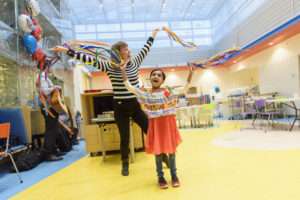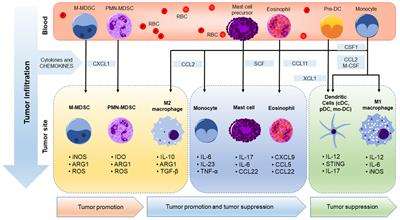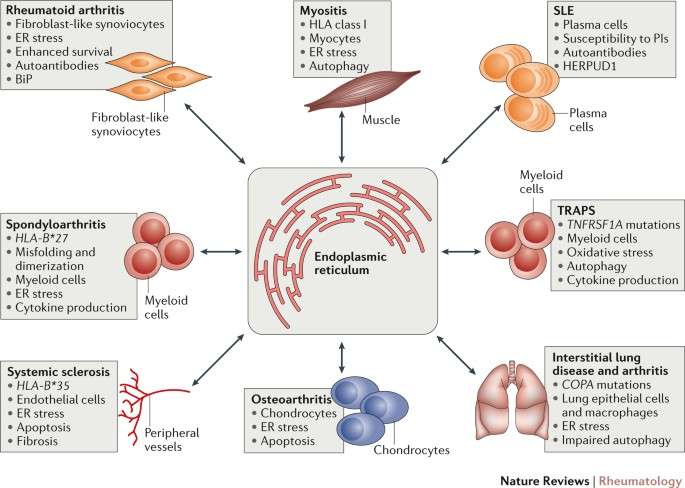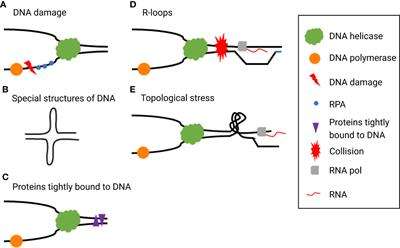
General Questions
What is dance/movement therapy?
The American Dance Therapy Association (ADTA) defines dance/movement therapy as the psychotherapeutic use of movement to promote emotional, social, cognitive and physical integration of the individual.
Dance/movement therapy is:
-
Focused on movement behavior as it emerges in the therapeutic relationship. Expressive, communicative, and adaptive behaviors are all considered for group and individual treatment. Body movement, as the core component of dance, simultaneously provides the means of assessment and the mode of intervention for dance/movement therapy.
-
Practiced in mental health, rehabilitation, medical, educational and forensic settings, and in nursing homes, day care centers, disease prevention, health promotion programs and in private practice.
-
Effective for individuals with developmental, medical, social, physical and psychological impairments.
-
Used with people of all ages, races and ethnic backgrounds in individual, couples, family and group therapy formats.
What do dance/movement therapists do?
Dance/movement therapists focus on helping their clients improve self-esteem and body image, develop effective communication skills and relationships, expand their movement vocabulary, gain insight into patterns of behavior, as well as create new options for coping with problems. Movement is the primary medium dance/movement therapists’ use for observation, assessment, research, therapeutic interaction and interventions. Dance/movement therapists help develop treatment plans and goals, document their work in clinical records and collaborate with professionals from other disciplines.
Where do dance/movement therapists work?
Dance/movement therapists work in a variety of settings including nursing homes, schools, psychiatric, rehabilitation and medical facilities, drug treatment centers, counseling and crisis centers, and wellness and alternative health care centers.
What does a dance/movement therapy session look like?
The extensive range of dance/movement therapy techniques and the needs and abilities of participants allow for a wide variety of movement activities in dance/movement therapy sessions. Dance/movement characteristics, from subtle and ordinary movement behaviors to expressive, improvisational dancing could occur.
To learn more about the ways in which dance/movement therapists work, go to the ADTA YouTube page and Profiles of DMTs.
Becoming a Dance/Movement Therapist FAQs
How can I become a dance/movement therapist?
There are two routes one can pursue to become a dance/movement therapist. View the R-DMT Applicant Handbook for an in-depth guide of requirements.
#1: ADTA Approved Graduate Program
Graduates of approved programs meet all professional requirements for the Registered Dance/Movement Therapist (R-DMT) credential. Please contact the school directly for application process, requirements, etc.
#2: Alternate Route
The Alternate Route is defined as a Master’s degree with dance/movement therapy training from qualified teachers. Other requirements include movement observation and assessment, psychology coursework, fieldwork, internship, and dance experience.
What degree/credential do dance/movement therapists receive?
The dance/movement therapy credential is awarded at the graduate level. Therefore, a Master’s degree is required. Upon completion of an ADTA Approved Graduate Program or the Alternate Route and acceptance by the Dance/Movement Therapy Certification Board, the Registered Dance/Movement Therapist (R-DMT) credential is awarded. R-DMT represents attainment of a basic level of competence, signifying both the first level of entry into the profession and the individual’s preparedness for employment as a dance/movement therapist within a clinical and/or educational setting. The Board Certified Dance/Movement Therapist (BC-DMT) credential can be obtained after the R-DMT is awarded, with additional requirements and experience. BC-DMT is the advanced level of dance/movement therapy practice, signifying both the second level of competence for the profession and the individual’s preparedness to provide training and supervision in dance/movement therapy, as well as engage in private practice.
What undergraduate degree should I pursue?
At the undergraduate level, there is no specific degree required. However, it is a good idea to have substantial exposure to topics related to both dance and psychology. For specific prerequisites, contact each ADTA Approved Graduate Program.
Where can I find information on how to volunteer/shadow a dance/movement therapist?
Opportunities to volunteer/shadow a dance/movement therapist are limited due to the nature of the work and the need for confidentiality. If you are interested in volunteering/shadowing, contact your region’s Member-at-Large or a local chapter.
What kinds of experience would be helpful for a future dance/movement therapist?
It is strongly encouraged to pursue a broad practice in dance, including a variety of dance styles and techniques, choreography, performance, and teaching. For education, focus on psychology courses and a course in kinesiology and anatomy. Helpful experience would include working or volunteering with people in various human service settings (i.e. summer camps, schools, hospitals, nursing homes).
How long does it take to become a dance/movement therapist?
If attending an ADTA Approved Graduate Program, expect to be in school for two to three years, full-time. For the Alternate Route, the length of time depends on many factors, such as committing full or part-time, location of courses (some travel may be required), when courses are offered, when the individual can attend, etc.
What school would you recommend?
Attending any of the ADTA Approved Graduate Programs provides in-depth knowledge and training from exceptional, experienced, board certified dance/movement therapists. The ADTA suggests contacting and/or visiting the school(s) to help decide if the institution is a good fit.
What does approval of graduate programs mean?
The ADTA approves programs that meet the requirements stated in the ADTA Standards of Education and Clinical Training. Graduates of approved programs meet all educational requirements for the Registered Dance/Movement Therapist (R-DMT) credential.
Where can I find a list of Alternate Route offerings in my area?
Ongoing Alternate Route course offerings can be found in the Alternate Route Course Calendar and in the Alternate Route Graduate Coursework documents contained on the Alternate Route page. Also, check the Announcements section under the Forum, ADTA on Facebook, and ADTA LinkedIn.
Where can I find information on licensure requirements?
Licensure requirements vary state by state. Contact your state licensing board directly. Find your state’s board on the State Professional Counselor Licensure Board List.
- Dance/Movement Therapy helps connect movement and emotion to boost physical and mental health.
- People don’t need a background or special abilities in dance to benefit from Dance/Movement Therapy.
- Dance/Movement Therapy may be beneficial for treating depression, eating disorders, ADHD, and more.
Dance/Movement Therapy (DMT) is more than a choreographed dance routine: According to the American Dance Therapy Association, it is the psychotherapeutic use of movement and dance to support intellectual, emotional, and motor functions of the body. As a creative arts therapy, DMT looks at the connection between movement and emotion to improve a person’s physical and mental health.
DMT may be recommended for people with a hard time communicating what’s troubling them, or as an alternative for those who don’t find traditional talk therapy effective, says Orit Krug, MS, BC-DMT, LCAT, a Dance/Movement Therapist. It is a form of psychotherapy that utilizes nonverbal cues, movement, dance, and talking.
Learn who DMT benefits and how it can enhance your physical and mental health.
What is Dance/Movement Therapy?
DMT emerged in the 1940s, led by Marian Chace, one of the founders of modern dance and dance therapy. She worked at St. Elizabeths Hospital in Washington, D.C., where dance and movement became a language for “shell-shocked” veterans — what we now call PTSD — to begin communicating and expressing as an integral part of their mental health treatment.
Krug describes DMT as going on a physical and mental journey to unearth past trauma and repressed emotions.
DMT is conducted by a registered or board-certified Dance/Movement Therapist with a master’s degree in the field who analyzes subtle and expressive behavior to better understand and work with a client. Dance/Movement Therapists develop treatment plans, maintain a clinical record of progress, and may work alongside other healthcare professionals.
According to the American Dance Therapy Association, DMT occurs in various places, including nursing homes, medical facilities, psychiatric centers, schools, and private practice.
DMT employs different techniques to help a person connect to their body. Here are a few common methods:
- Mirroring: This is the most popular method for DMT, and it can be done either with a group or with only the instructor. One person performs a spontaneous movement while other people imitate the movement. “It’s like the people mirroring the movement are saying ‘We see you, I understand what you’re saying, and I’m reflecting it back’ just like a verbal conversation. It helps people be seen on a human level,” says Krug.
- Chacian: This is method focuses on rhythmic body movement and symbolism to promote communication and expression, says Julia Iafrate, DO, an Assistant Professor of Rehabilitation and Regenerative Medicine and Director of Dance Medicine at Columbia University Irving Medical Center. It often starts in a circle with the therapist giving verbal and nonverbal cues to get a sense of the group’s emotional state. The group then engages in simple, repetitive movements, while the therapist verbally addresses those feelings, connecting them to the body’s movements.
- Authentic Movement: This technique involves having clients explore their subconscious emotions and thoughts by acting them out through improvised dancing. The client keeps their eyes closed to minimize distractions and to better connect the mind to the body. The person running the therapy session observes the process of the mover in a non-judgmental way.
Who can benefit from Dance/Movement Therapy?
People don’t need to have a background or special abilities in dance to benefit from DMT. It’s not a dance or exercise class, and you won’t be judged during a session. Rather, DMT is a therapeutic method that may be used in conjunction with other forms of therapy to help clients access their authentic feelings and better understand their own body, mind, and behavior
DMT is suitable for all ages, including:
- Children. Depending on the age, children may not have the words to talk about a problem which increases the appeal of DMT for self-expression.
- Teenagers and adults. These age groups can become defensive after trauma. Dance therapy can help cut through that defensiveness.
- Older adults and seniors. This age group is commonly associated with declining health, including memory loss. DMT helps engage the body and disengage the mind, which helps with focusing on the present.
Conditions treated by Dance/Movement Therapy
DMT may also be therapeutically beneficial for various chronic physical and mental health conditions. Here’s what the research shows:
- Depression. A 2019 review found people who practiced DMT reported lower levels of depression and anxiety and an increase in physical skills such as walking, turning, and balance. The positive effects of DMT were continuous in subjects over 22 weeks.
- Eating disorders. A small 2020 study in women with eating disorders found Dance/Movement Therapy helped improve body image and was most effective when combined with traditional eating disorder treatments, such as talk therapy.
- Autism. A 2018 review reported improvements in social, cognitive, and physical abilities in both children and adults with autism after several sessions of DMT. Researchers also found a decrease in compulsive and repetitive behaviors.
- Chronic pain. A 2018 study in patients with fibromyalgia reported less chronic pain after participating in a 12-to-24-week dance intervention program.
- Parkinson’s disease. According to the Parkinson’s Foundation, DMT aids with balance, coordination, and mobility. It also helps with depression, digestive issues, anxiety, and fatigue associated with Parkinson’s.
- ADHD. A 2018 study found DMT resulted in improved test scores for young children with ADHD.
Benefits of Dance/Movement Therapy
The effects of DMT are supported by research. Moving your body is thought to evoke emotional awareness and regulate your emotional state.
What the research says: A small 2016 study found that performing particular dance movements helped people express anger, happiness, and sadness. A more recent 2019 study also reported an increase in quality-of-life and a boost in cognitive skills in people who underwent DMT.
DMT boosts cognitive abilities by:
- Encouraging creativity
- Improving body image
- Relieving stress
- Managing mood
DMT also helps refine gross motor skills — raising arms side to side, jumping, coordination, and balance — as a form of exercise, according to the Disability Resource Community.
What the research says: In a small 2016 study, women over the age of 60 who underwent three months of DMT showed improvements in their balance.
The physical benefits of DMT include:
- Improved balance between muscles and fat, or overall body composition
- Improved muscular and overall strength
- Improved balance and coordination
- Decrease cardiovascular risks
Insider’s takeaway
DMT is a nonverbal form of treatment that helps a person make a connection with their body and mind. It’s an appropriate therapy for people of all ages and may particularly benefit people with chronic diseases. DMT can also boost a person’s mental and physical alertness.
DMT is sometimes covered by private insurance, but this may vary. If DMT piques your interest, the American Dance Therapy Association is the best resource for more in-depth information.
DMT has been found to help people express anger, happiness, and sadness, as well as increase quality-of-life and boost cognitive skills. Overall, Iafrate says DMT can be a good option for anyone who is having trouble verbalizing their emotions. It may allow their body to tell the story that their mind and mouth aren’t able to yet.
“We’re good at using words to cover up how we’re feeling, we choose what words we want to say,” Krug says. However, when people work out their feelings through bodily movement, they can “subconsciously express themselves as an alternative to traditional talk therapy.”
Jocelyn Solis-Moreira is a contributor to Insider.
Read more Read less









